I think the most important stroke in tennis is the serve. The player who serves starts the game and ultimately has control on how the point is played out. It is no surprise that some of the best players in the game have the best serves. Just look at Serena Williams or Roger Federer. By mastering the serve, it gave them clear advantages over their opponents as they could win ‘free’ points, rather than have to battle 10-20 rallies for every point.
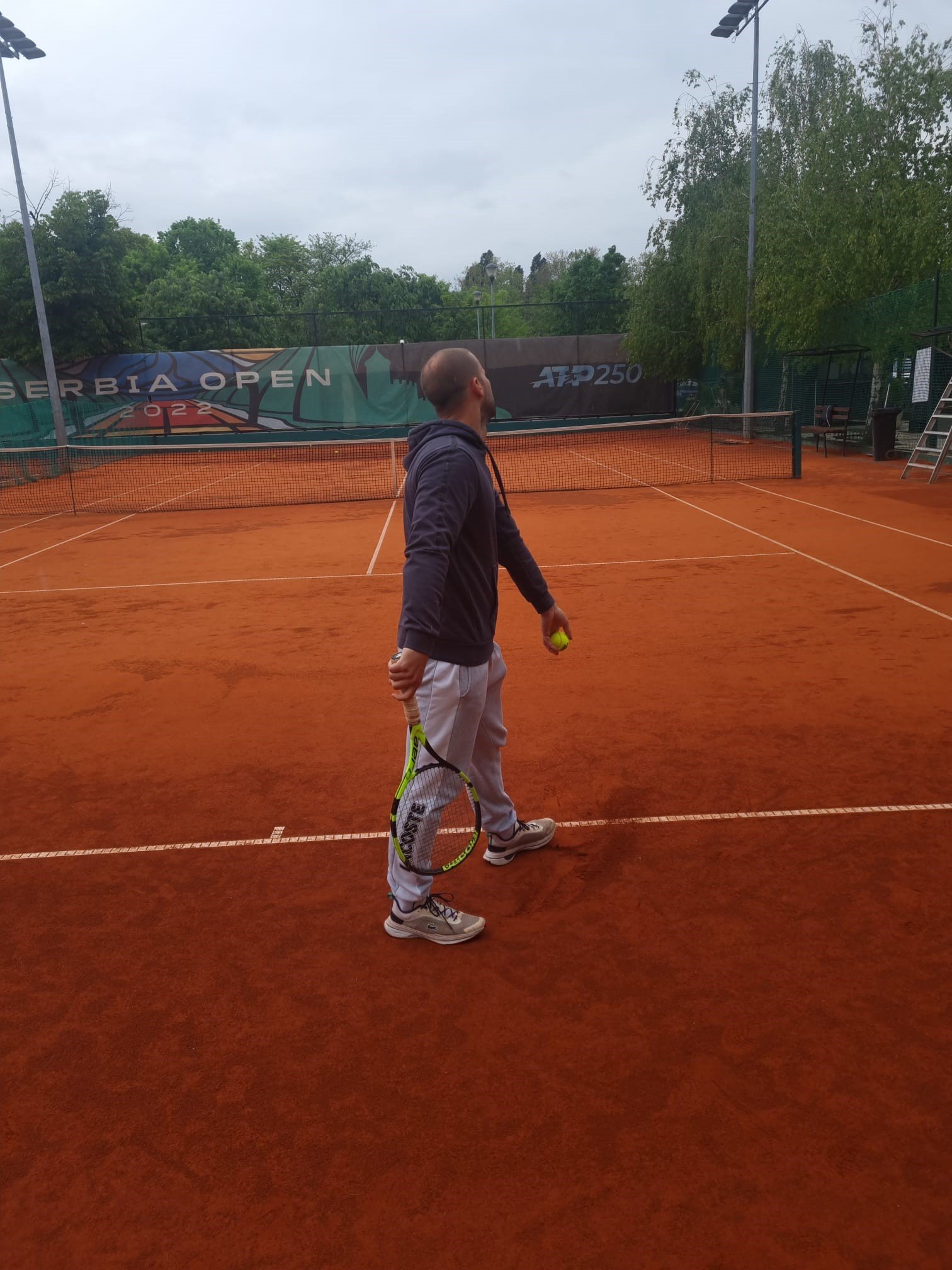
Tennis players can use many kinds of serves, from flat and hard to kick and slice serves. After reading this guide we want you to be able to hit a good, quality serve and we’ll do this in our step by step guide with Miki.
In tennis, players who serve normally win the game. This is because they are in control at the start of the game and can choose a wide variety of serves to outwit their opponents. Just check out this incredible stat. Ivo Karlovic has won an astonishing 92% of all service games he has played in his career.
Here we will cover four main sections;
- Proper Serve Technique
- Different serves
- Rules of the serve
- Fastest serve
The Technique of the Serve
Starting position
Get in the starting position. Whether you serve from the deuce court or ad side of the tennis court, your playing hand will decide which stance you need. The front foot (the left foot) of a right-handed player should point to the right net post, and the back foot should be parallel to the baseline. Until the server makes contact with the ball, both feet must stay behind the baseline and cannot touch or cross it.
Be comfortable, take a deep breath and compose yourself. You control this area so make sure everything is in position before you start your service routine. Too often I see players who are rushing to get the serve down.
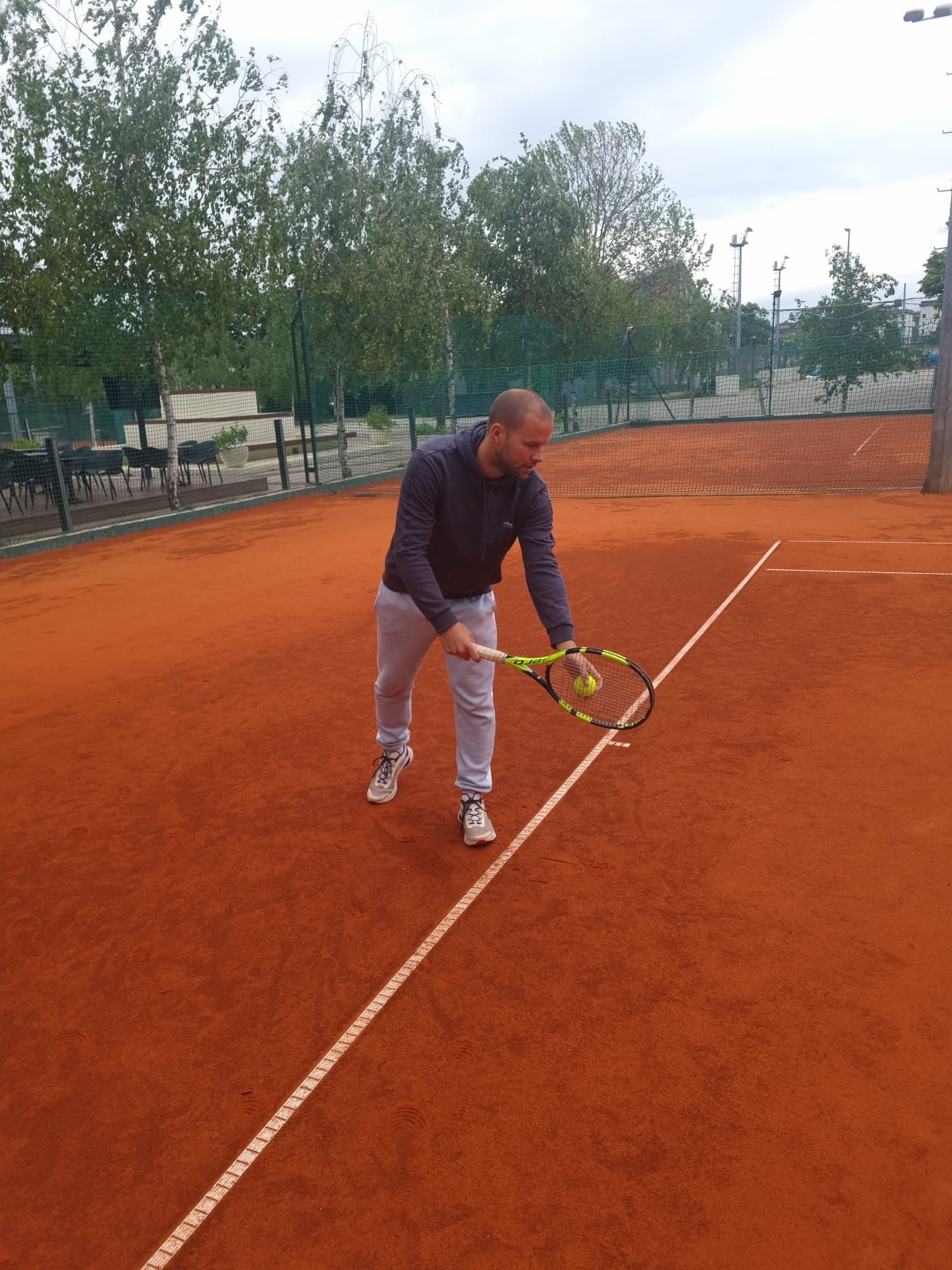
Grip of the serve
Choose the correct grip. The Continental grip is a regular serve grip (as well as the same grip for overheads and volleys). You can hit a flat or a slice serve as your first serve. On your second serve, you might want to use the kick serve technique to play it safer with less force while still putting in a punch. This serve uses spin and also has more room for error. The type of service you wish to provide will determine your actions and follow-through.
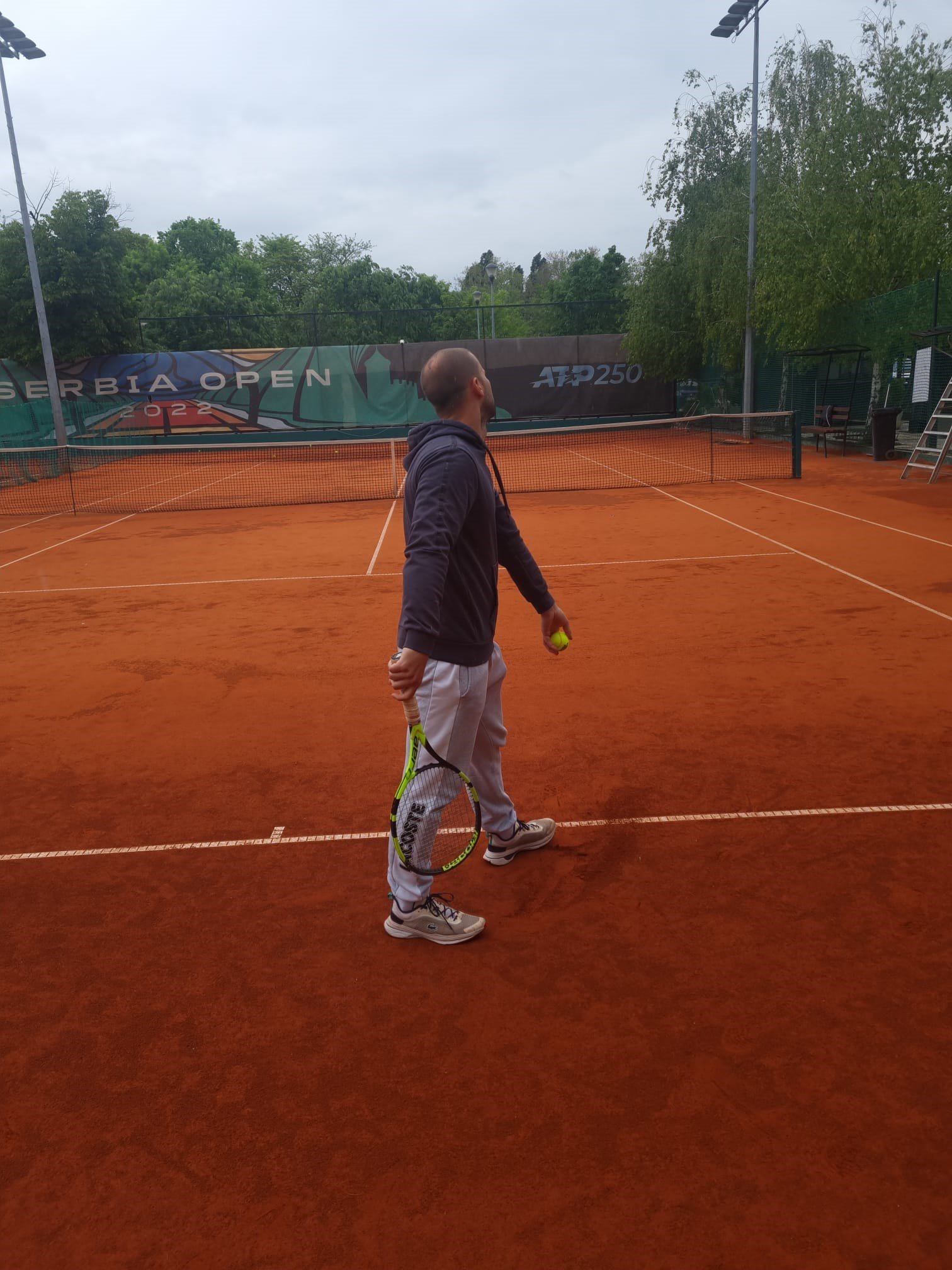
Ball toss
Ball tossing is very important for a consistent serve. The toss should be high and above your head and slighty in front of you. When the ball flies in different directions every time you toss it, it will be much more difficult to perfect your serving motion. Practice throwing the ball up for best results.
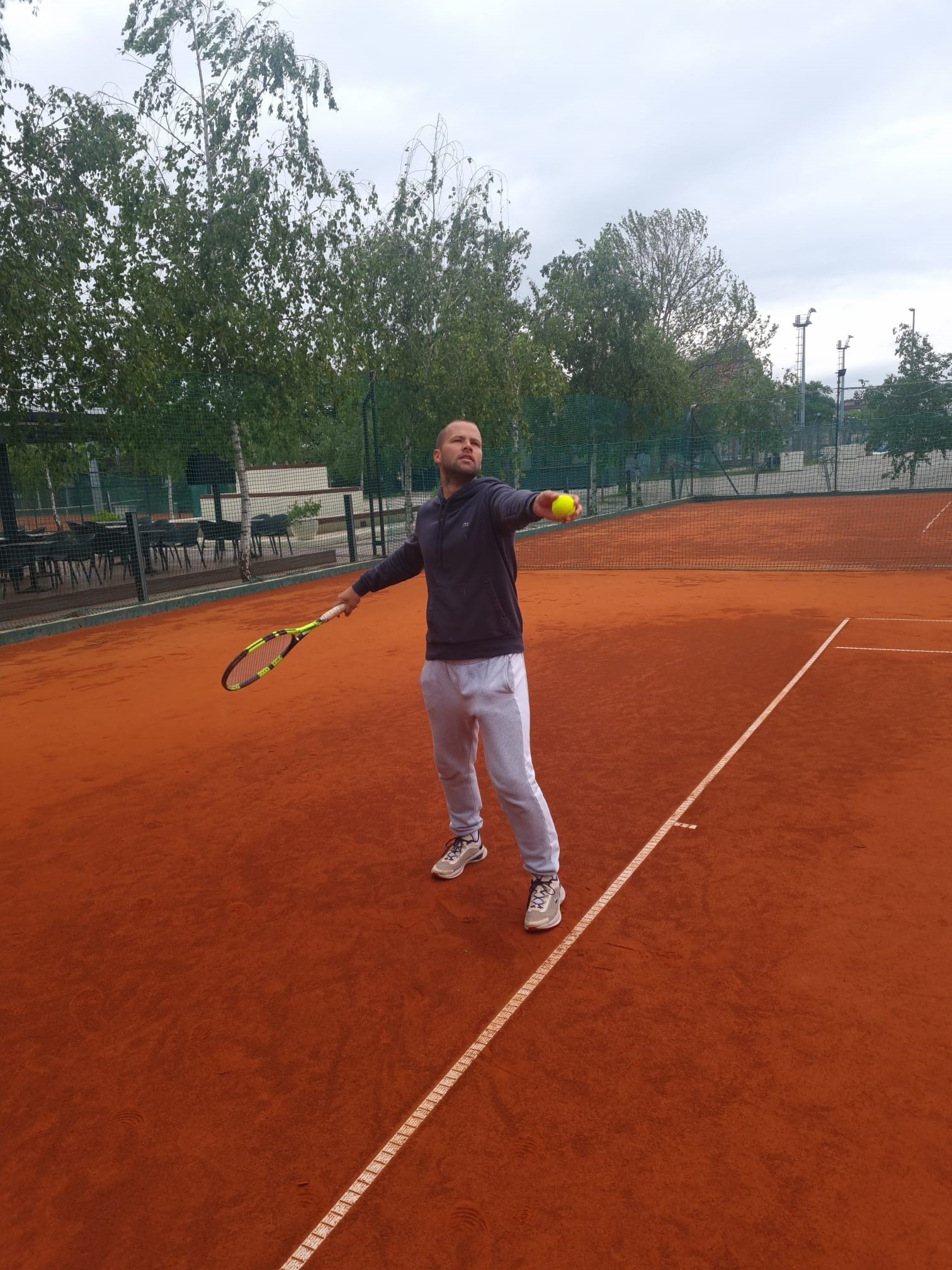
To be considered in play, the first and second serves must cross the court and bounce diagonally within the opponent’s opposite service box.
Step-by-step of the serve motion
When serving, you should hold the tennis racket with a continental grip (like a hammer). However, an eastern forehand grip (like shaking hands with the racquet) is also acceptable in the early stages if you are just learning to serve. Although the eastern grip is simpler to learn at first, you will eventually need to switch to a continental grip.
If you are a right-handed player, drop both arms from your starting position and separate them when they touch the inner thigh of your front leg.
Toss the ball with your left hand while raising your racket into a trophy pose. As you toss the ball, your racket hand should ideally move a little more slowly than your tossing arm. Make sure to transfer your body weight forward while tossing. Your wrist should be relaxed while hitting a serve.
There are additional ways to begin your service motion, but they are all designed to place you in a throwing position from where you may erupt to hit the ball and toss the ball to the right spot.
“Trophy pose” is the term used to describe this throwing motion. When you are more confident, you will move your hip forward and put more weight on the front foot. Your left shoulder will be much higher than your right shoulder as you throw the ball, and your arm will be pointing straight up at the ball. The ball should be at its highest point. You appear to be about ready to throw the racquet into the air at this point. Then you will push off the ground and begin your swing at the ball from this posture. If you time it well, your racket head will drop behind your body and point to the ground at its lowest point. The point of contact is in front of the body at full extension.
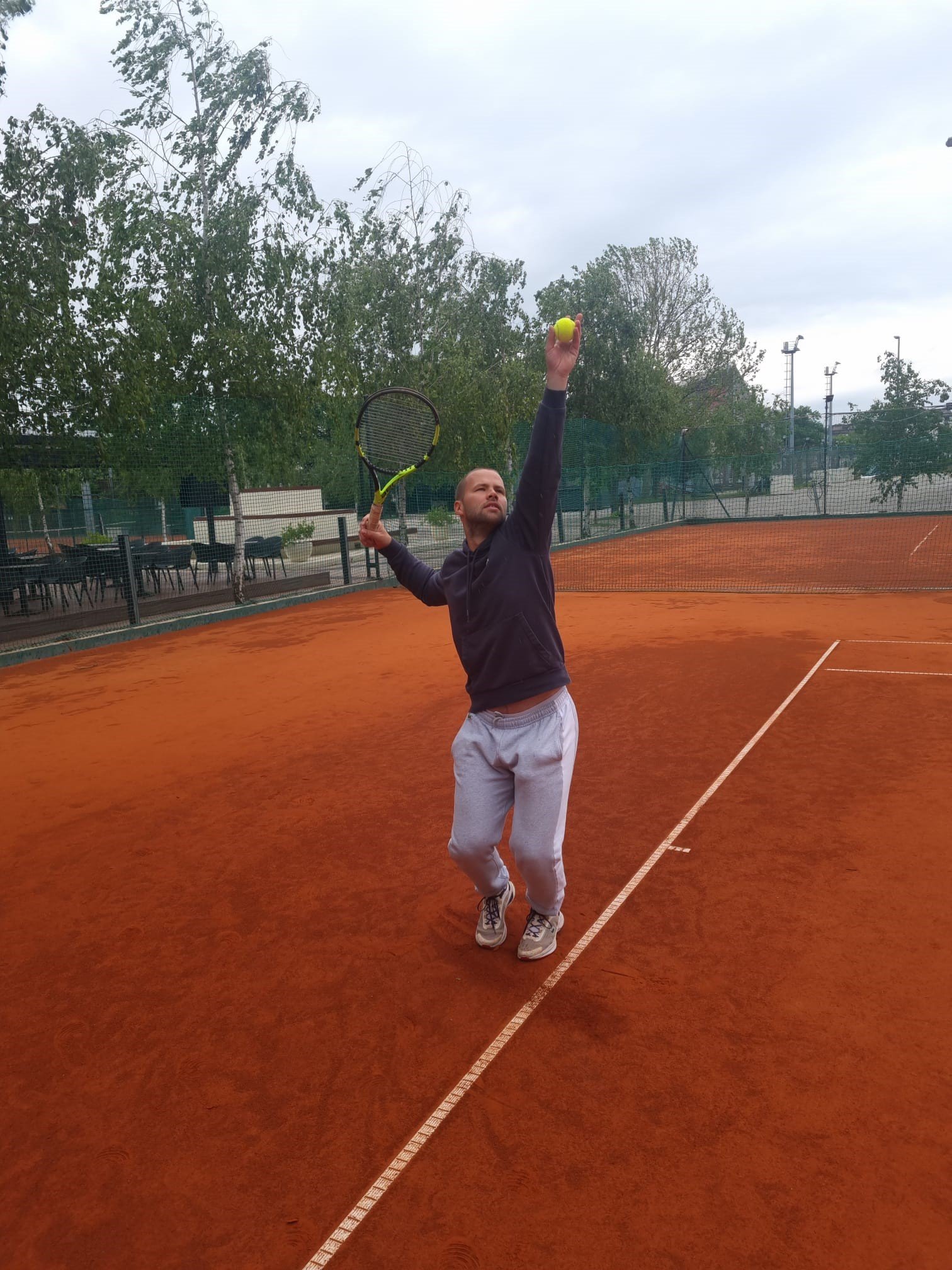
The upper body is totally extended, from the left foot to the end of the racquet. It should be a top priority for players of all skill levels to strike the ball fully extended, especially for beginners or those who are still learning how to jump on the serve.
With more experienced players, the forearm continues to pronate as the ball leaves the racquet. The upper body rotates to face forward, as does the hip. In order to stabilize their bodies, advanced players fall on their front leg while keeping their rear leg high (horsekick). The racket loosely finishes the swing on the body’s left side.
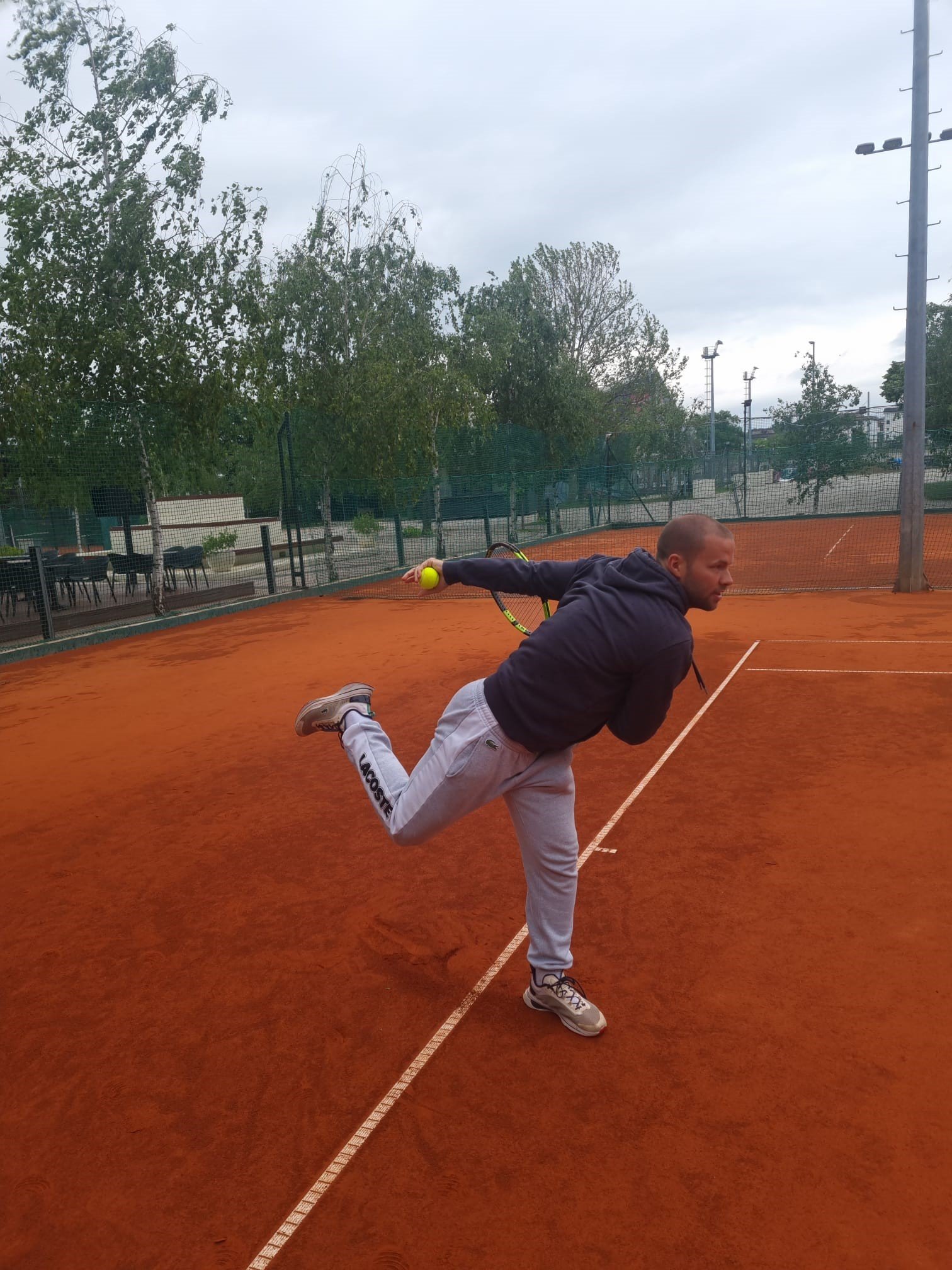
If you are a beginner and are not yet comfortable jumping, focus on rotating as you swing so that you end your serve with your back heel off the ground and your body looking forward. As it slows down, the racquet will continue to swing toward the body’s left side. To support the upper body, the left arm keeps tight contact with the upper body.
Different types of Tennis Serves
Flat Serve:
Because of its power and potential for an ace, the flat serve is probably one of the most popular serves in tennis and most players will use as a first serve. The word “flat serve” refers to how little spin is delivered to the ball upon contact. You should attempt to strike the ball directly from behind, without brushing up against it or hitting its side, if you want to hit it flat or without any spin. Being taller gives you more clearance over the net and a larger margin for error, making it simpler to execute a hard flat serve.
The flat serve is harder to execute if you are short (DH add link to shortest tennis players) because you have less room to maneuver around the net, which lowers your margin of error. Toss the ball slightly in front of you and above your head, making sure that the ball is high enough to allow you to hit it at the highest point. The toss should be in a straight line, with the ball releasing from your fingertips as you extend your arm upward.
Slice Serve:
A slice serve in tennis is a type of serve that has a side spin and curves away from the opponent. It can be a useful service to use since it can make the opponent hit a weaker return or move out of position to return the ball. A successful slicing serve requires a high-serve toss.
Always keep the ball above your head because changing the position of your ball toss can give your opponent the impression that you’re about to try something new. Use your wrist to cut under and around the side of the ball with your hitting arm (a swing from high to low). The follow-through for a right-hander should cross your body to the left side, and for a left-hander, the opposite should be correct.
Don’t overpronate. Try to retain your racket face in a chopping motion as you follow through your slicing serve to avoid pronating your wrist, which will result in you striking your contact point flat.
Kick Serve:
This serve is also known as a “spin serve.” The first thing you need to know when learning this kind of serve motion is how the toss changes when going from a flat or slice serve to a kick serve. The serve is also slower than a hard serve. Note in the video where Miki throws the ball toss.
You are in the same position when you go to the baseline to serve. The place where you throw the ball is what changes.
You must hold onto the tennis ball for a little bit longer when serving a kick serve in order to force the ball somewhat beyond your head and over your left shoulder for a right-handed player (the opposite for a left-handed player).
Getting the ball to this location makes it easier to brush up and across the ball, producing topspin and sidespin, to create an effective kick serve. When uses effectively, the ball is sent over the net to your opponent with spin and almost taking off once it reaches them. It can make it very difficult to hit a consistent return.
Underhanded Serve
Underhand serves are relatively new to the game of tennis. Nick Kyrgios is probably the player that started the trend in the professional game and it has now become a regular part of the game, especially for players that stand behind the baseline to receive serve. There is not a true art to it, keep it short and the best players seem to hit under and across the ball when hitting this serve giving it some slice and spin. I am sure this serve will develop over time. One thing to note, get it wrong and your opponent will punish you very quickly. I wouldn’t say this is a great serve, certainly an effective serve if used wisely.
The difference between a flat serve, a slice, or a kick serve
- The main difference between the three types of serves is the way the tennis ball spins.
- Serves that are flat have no spin at all.
- For a right-handed player, slice serves’ sidespin causes the ball to go from the right to the left.
- The ball jumps up high and to the side as a result of kick serves that spin out and up.
- Kick serve – you should hit from left to right and also from down to up.
Rules for the serve
Double Fault:
The loss of the point results from the server failing to deliver the correct serve twice in a row, which is known as a double fault. When the server either misses the ball over the net, smashes it into the net, hits it outside the service box, or stands on or over the baseline while serving, it is considered a double fault. When a player double faults, the point is lost, and the server’s opponent receives a point.
Foot fault:
A foot fault is a violation that occurs in tennis when the server’s foot or feet touch the baseline or the court inside the baseline before or during the serve. According to the rules of tennis, the server must keep both feet behind the baseline until after the ball is struck. If the umpire or linesperson notices this violation during the serve, they will declare a “foot fault.”
If a foot fault is called during a first serve, it results in a fault, and the server is allowed to serve the second serve.
Let:
When a served ball touches the net and lands in the service box, it is called a “let” in tennis. A serve that has been let is referred to as a “let serve.” The point is replayed, and the server is permitted to take the serve again without it counting as a fault or a double fault.
Ace:
An ace is a serve that is so good that the opponent is unable to touch the ball with their racket, resulting in a point for the server. The fact that an ace is a winner and prevents the opponent from making a return makes it one of the most powerful and successful shots in tennis. To be considered an ace, the serve must land within the bounds of the service box, and the opponent must not make any contact with the ball. Aces are typically achieved with fast and accurate serves, often hit down the T or out wide to the sides of the court.
The Fastest Serve in Tennis
At the 2018 Miami Open, American John Isner set a tennis record for the fastest serve. Isner delivered a serve that was measured at a speed of 253.1 kilometers per hour (157.2 miles per hour). Ivo Karlovic of Croatia set the previous record in 2011 at 156 miles per hour (251 kilometers per hour).
It’s important to remember that the speed of a serve can vary depending on a variety of elements, such as the court’s conditions, the location’s altitude, and the kind of radar gun used to detect the speed. It’s also likely that some of the fastest serves in history went unrecognized because not all tennis competitions utilize the same equipment to measure serve speed.





Comments are closed.